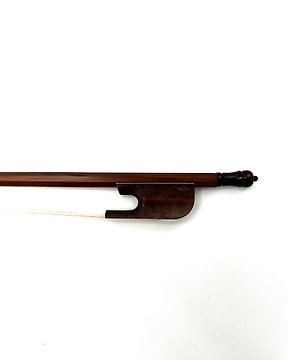
Unlabelled - Archet de violon - 2015
Nº 84150825

Nº 84150825

Tanpura, bought new, does not fit my sound-gong concerts. Comes from the area where the best instruments are made.
It's better to pick it up, it's a fragile instrument.
"The tanpura does not play a melody, but rather creates a meditative ambience, supporting and sustaining the performance of another musician or vocalist, as well as for musicians accompanying a dance performance. The instrument features four strings which are tuned to specific notes of a given scale or musical key, normally the fifth (Pa; Solfège, “So”) and the root tonic (Sa; “Do”). The strings are generally tuned 5-8-8-1. One of the three strings tuned to the tonic is thus an octave below the others, adding greater resonance and depth to the ambient drone.
Through continuous, rhythmic plucking of its strings, the tanpura creates a constant harmonic bourdon or drone effect. Uniquely, the tanpura is not played in specific rhythm with the soloist, percussionist, or any other featured musician; the precise timing of plucking a cycle of four strings in a continuous loop is a determinant factor in the resultant sound, and it is played, unchangingly, throughout the whole performance. The tanpurist must keep true to their own rhythm for the duration of the composition, which may be over an hour in some cases, as their drone is critical to the entire musical foundation of the performance. The repeated cycle of plucking the strings in succession creates a sonic canvas on which the melody of the raga (or other composition) is drawn. The sequence of string-plucking is generally (according to pitch) 5-8-8-1, with the fourth and final string plucked being given a slight “rest”, usually two to three seconds, before repeating the cycle. The combined sound of all strings–each string a fundamental tone with its own spectrum of overtones–supports and blends with the external tones sung or played by the soloist"
Comment acheter sur Catawiki ?
1. Découvrez des objets d’exception
2. Faites la meilleure offre
3. Effectuez un paiement sécurisé